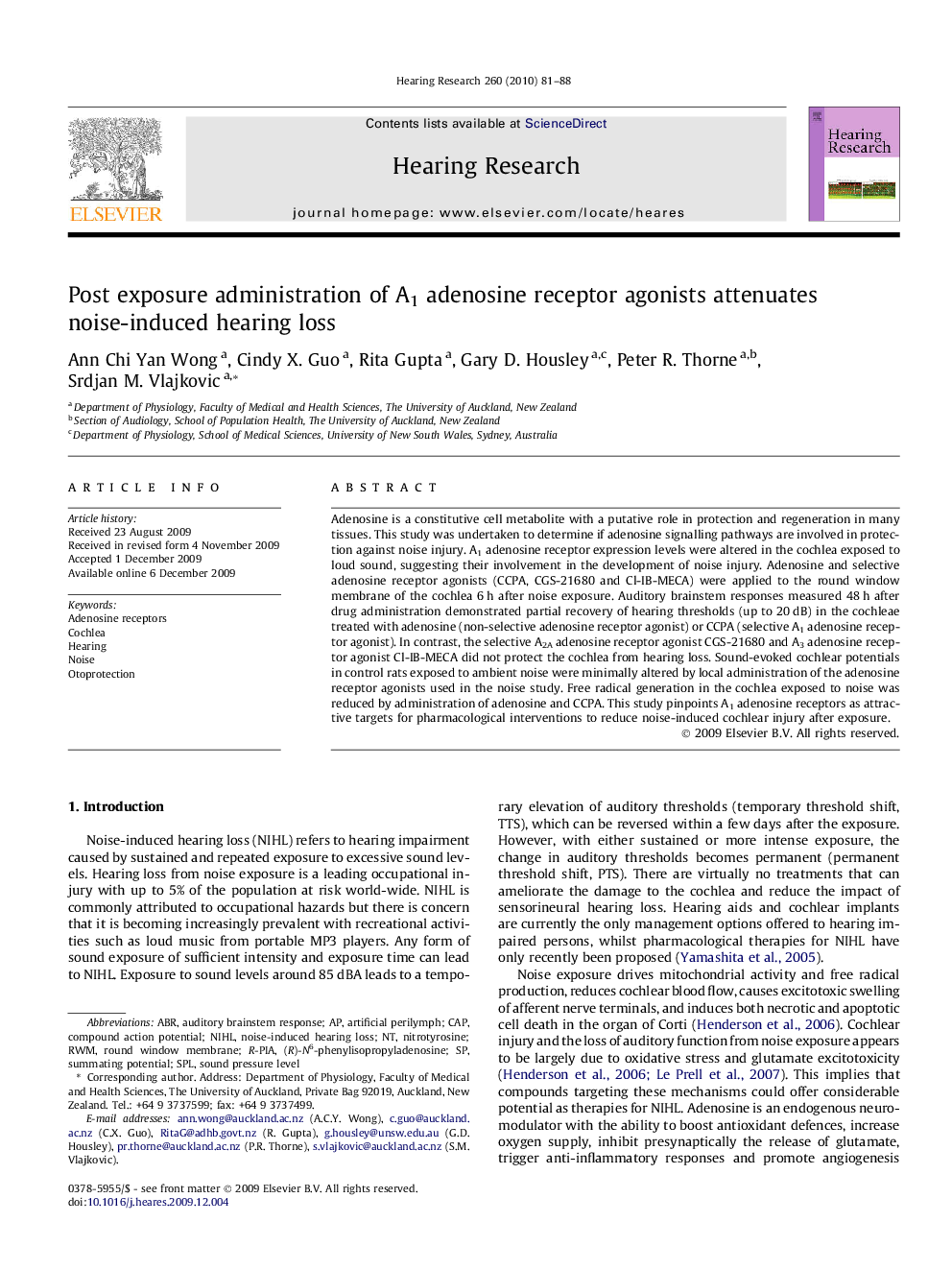| Article ID | Journal | Published Year | Pages | File Type |
|---|---|---|---|---|
| 4355698 | Hearing Research | 2010 | 8 Pages |
Abstract
Adenosine is a constitutive cell metabolite with a putative role in protection and regeneration in many tissues. This study was undertaken to determine if adenosine signalling pathways are involved in protection against noise injury. A1 adenosine receptor expression levels were altered in the cochlea exposed to loud sound, suggesting their involvement in the development of noise injury. Adenosine and selective adenosine receptor agonists (CCPA, CGS-21680 and Cl-IB-MECA) were applied to the round window membrane of the cochlea 6Â h after noise exposure. Auditory brainstem responses measured 48Â h after drug administration demonstrated partial recovery of hearing thresholds (up to 20Â dB) in the cochleae treated with adenosine (non-selective adenosine receptor agonist) or CCPA (selective A1 adenosine receptor agonist). In contrast, the selective A2A adenosine receptor agonist CGS-21680 and A3 adenosine receptor agonist Cl-IB-MECA did not protect the cochlea from hearing loss. Sound-evoked cochlear potentials in control rats exposed to ambient noise were minimally altered by local administration of the adenosine receptor agonists used in the noise study. Free radical generation in the cochlea exposed to noise was reduced by administration of adenosine and CCPA. This study pinpoints A1 adenosine receptors as attractive targets for pharmacological interventions to reduce noise-induced cochlear injury after exposure.
Keywords
Related Topics
Life Sciences
Neuroscience
Sensory Systems
Authors
Ann Chi Yan Wong, Cindy X. Guo, Rita Gupta, Gary D. Housley, Peter R. Thorne, Srdjan M. Vlajkovic,
